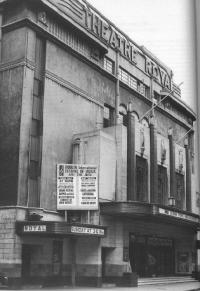The Theatre Royal’s short 27-year lifespan (it opened in 1935) is testimony to the rapid social change and revolution in entertainment that took place during the last century. The same site had played host to the ‘first’ Theatre Royal (burned down in 1880), the Leinster Hall (built in 1886) and the Theatre Royal Hippodrome (demolished ... Read more
Randalstown, Co. Meath
In 1834 a new experiment in tobacco-growing was established by Sir Nugent Everard at Randalstown, Co. Meath. Such was the dedication of Everard to this experiment that he sent his son to America for several years to ‘learn the business’. In seeking approval for such cultivation, Everard had enlisted the support of such men as … Read more


